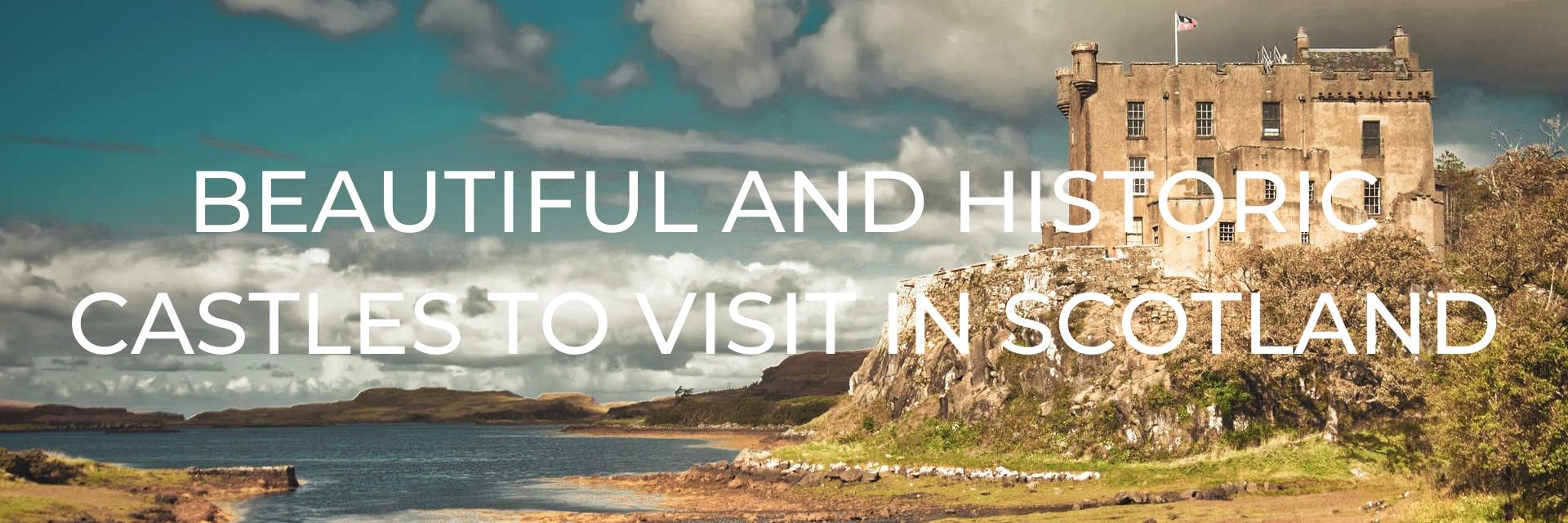
Scotland’s castles began with one purpose – to serve as fortified homes for the landowning aristocracy. Over the centuries, as society became more settled and peaceful, the defensive features gave way to architectural grandeur as displays of wealth and status.
The clash and conflict of the country’s colourful history have left this legacy of military strongholds scattered across some of the most breathtaking scenery in Britain. Border castles were raised against English incursions and island fortresses were built to control the seaways.
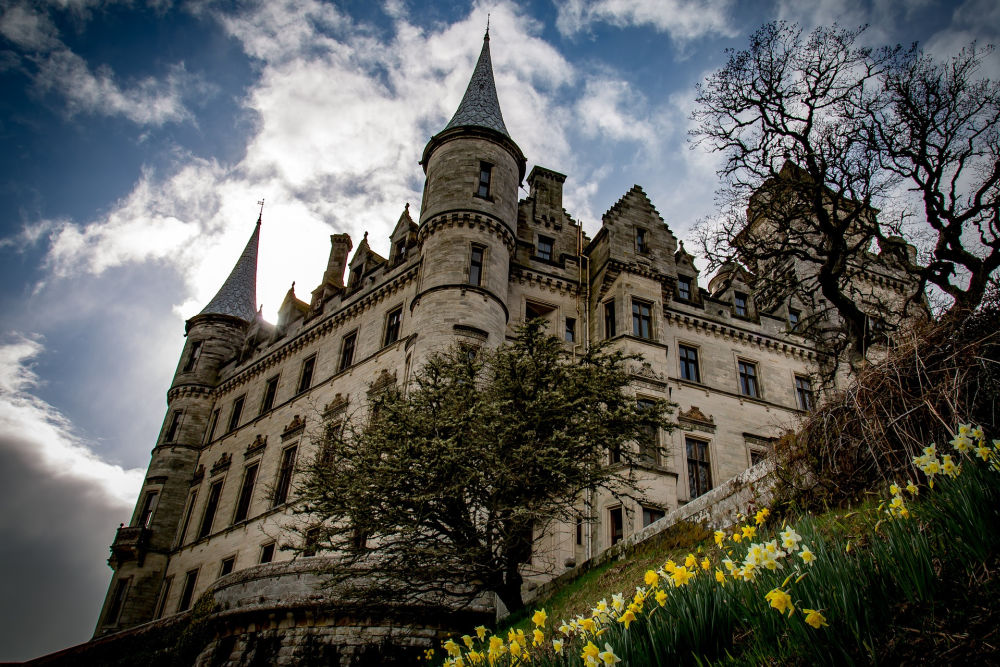
It is estimated that there were once up to 3,000 castles – nearly one for every 100 square miles – in Scotland. Today, that number has dropped to about 1,000 castles, ranging from 12th-century ruins to magnificent Victorian mansions. No matter where you find yourself, there is never a castle far away, so if you like exploring castles, you’ll love visiting Scotland.
It would be impossible to narrow it down to the ‘best’ castles to visit in Scotland, but we’ve rounded up recommendations for some of the most beautiful and historic castles from fellow travel bloggers and us that you’ll want to add to your own trip to Scotland.
This post may contain affiliate links. Please read our full disclosure policy here.
TABLE OF CONTENTS
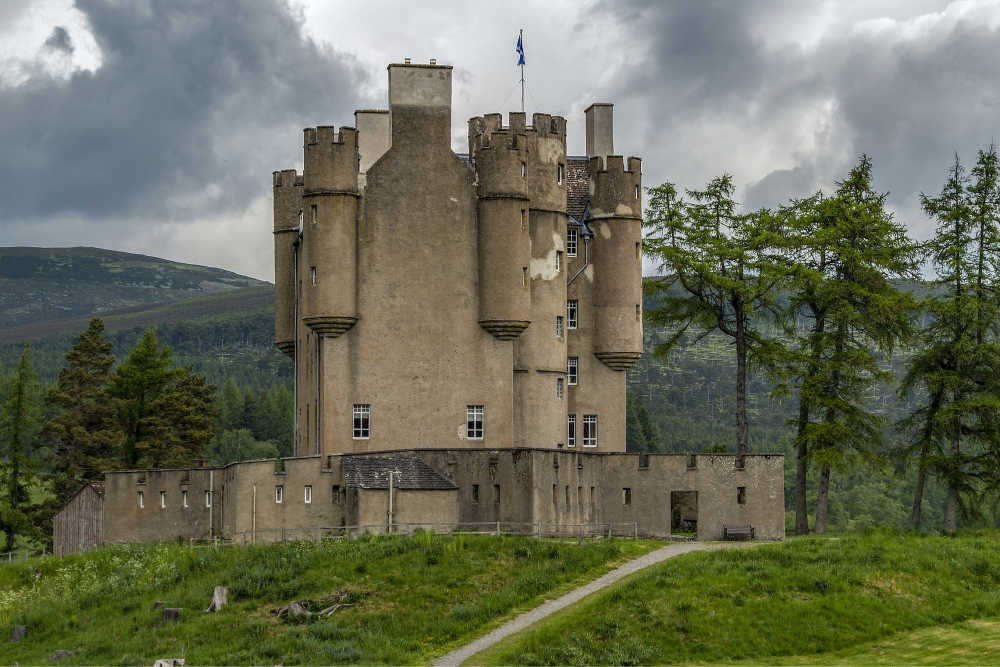
Castles first appeared in Scotland in the 12th century from the earliest Pictish brochs and Norman-influenced motte and bailey to the distinctive tower-house, and then to the more fashionable palaces.
MOTTE AND BAILY
Common in the 1100s and 1200s, this type of castle stood atop two adjacent mounds and was enclosed by a wall, palisade, or defensive ditch. The higher mound, called the motte, was strongly defended as it held the keep and the chief’s house. The lower mound, called the bailey was where the dwellings for the rest of the people and the storehouses were found.
Most of these types of castles are little more than ruins today, but an example of this type you can visit is Duffus Castle (c.1150) which still stands because it was atypically made of stone rather than wood.
TOWER HOUSES
By the 13th century, tower houses started to be built to deter local attacks rather than major assaults. These designs lasted about 400 years and were characterized by single towers divided into three or four floors with few windows in the walls. Defensive structures were on top, and if extensions were made, they were done vertically to minimize the area open to attack. Windows were narrow slits for arrows, doors were small and inconspicuous, and there were crenellated parapets on top for sentries.
With the arrival of gunpowder and cannons in the 15th century, castle designs featured gun loops, round towers, bulwarks, and bastions. As defensive requirements started to decrease towards the 17th century the battlements and turrets became decorative and wings were added to the original towers for accommodations.
Two examples of castles of this design are Braemar Castle (pictured above) which is a conglomeration of extended towers, and Blair Castle which incorporated a medieval tower.
CLASSICAL PALACES
By the 18th century, the need for defence had passed, and castles were built in the manner of country houses with designs influenced from all over Europe including Renaissance, Gothic revivals, and hints of French chateaux. They were constructed with larger windows, balustrades instead of battlements, and decorative cupolas and colonnades.
Drumlanrig Castle is a good example of this type of castle with its traditional Scottish aspects as well as Renaissance features such as a decorated stairway and façade.
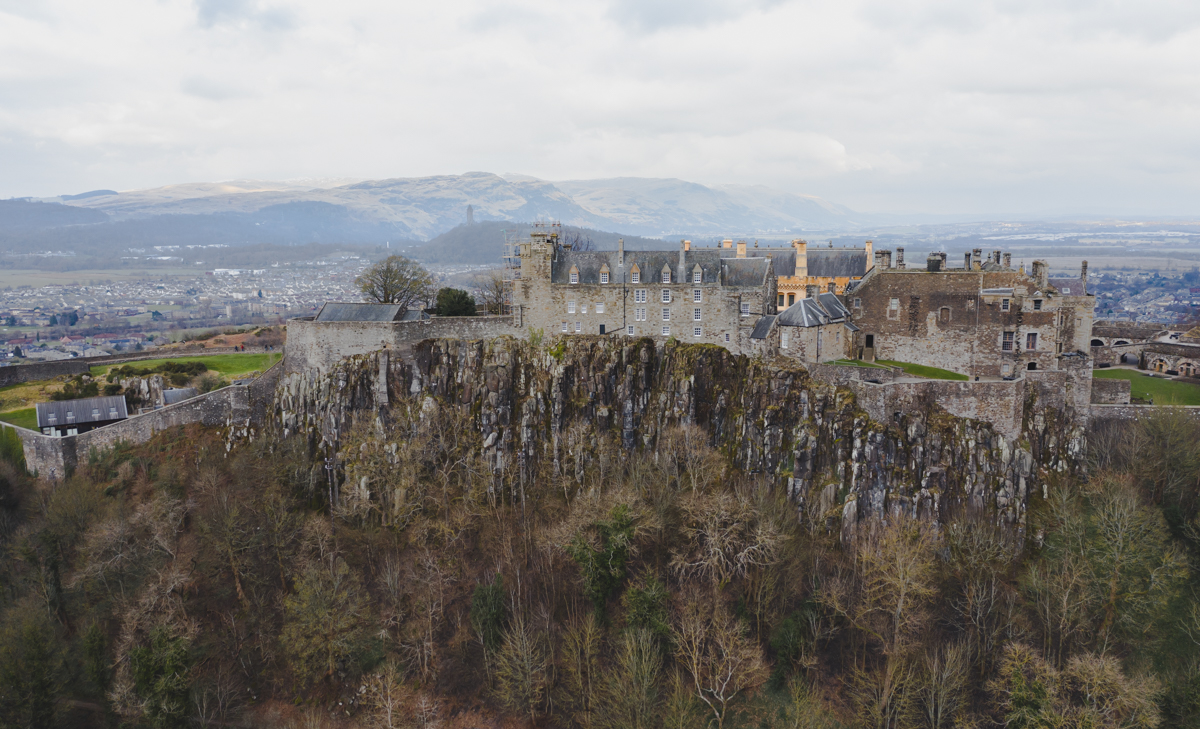
Stirling Castle on the edge of the city of Stirling an hour away from Edinburgh is one of Scotland’s must-see attractions. There’s been a castle on the hill that Stirling Castle now sits on since the 12th century, although the current buildings there can only be dated back as far as the 15th and 16th Centuries.
Stirling Castle was once considered to be the key to the kingdom of Scotland due to its location on the border between the Scottish Highlands and Lowlands. This means it has seen many a battle over the centuries! During the Wars of Independence between Scotland and England, the castle changed hands eight times in just 50 years. It was also where famous battles including the battle of Stirling Bridge took place and it played home to royalty including Mary Queen of Scots and James VI.
When you see the castle nowadays you’ll notice one of the buildings, the Great Hall, is bright yellow in comparison to the others. This is because this building was restored in the 1990s and during the restoration process it was discovered that the castle had been coated in lime wash and so was originally yellow before centuries of ageing. Therefore it was decided the same process would be done in restoring the hall and since that hasn’t yet had centuries of ageing, it’s still bright yellow. It certainly makes for interesting viewing when you visit!
Contribution and Photo from Hannah of That Adventurer Blog
Reviews of Stirling Castle | Castle Esplanade Stirling FK8 1EJ, Scotland
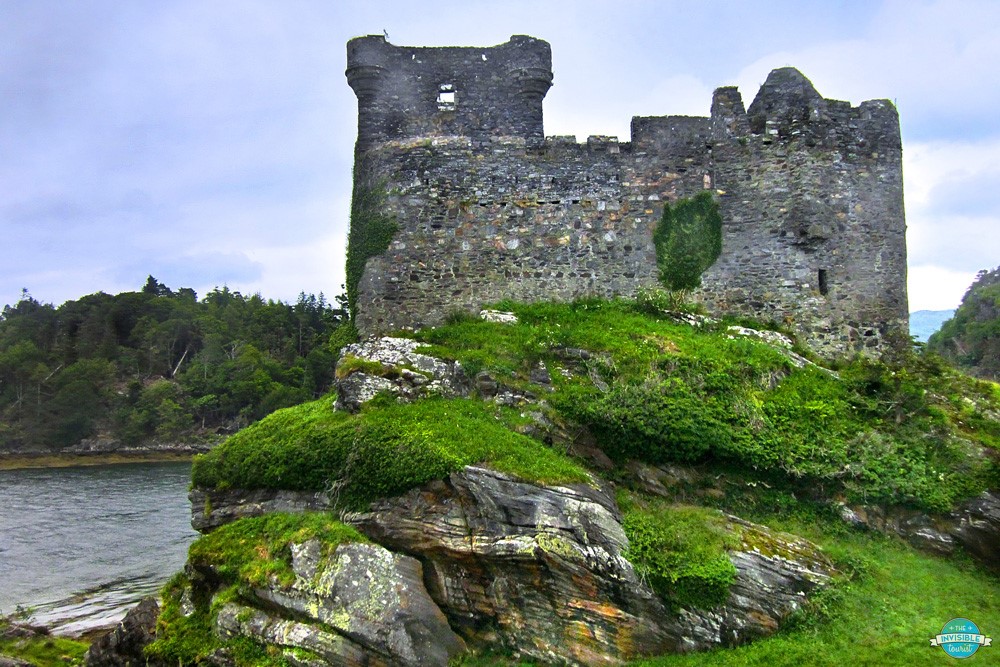
Not everyone can say their ancestors owned a castle, so you can imagine my excitement when I found out mine did! Dating back to the 14th century, Castle Tioram was the seat of my ancestor’s clan, the Macdonalds of Clanranald. Located at the end of a rugged road leading to Loch Moidart, the castle is literally a hidden gem, about 80kms west of Fort William on the A830.
On visiting Castle Tioram, I loved the tranquillity of the surrounding area, with locals enjoying quiet strolls with the castle as a backdrop. Although, it hasn’t always been so tranquil. It was amazing for me to think my ancestors fought and defended this area from the Crown in many military campaigns.
Of the various battles Castle Tioram endured throughout the centuries, the most notable was the attack by order of Mary de Guise, mother to Mary, Queen of Scots in the 16th century. Later, the castle became artillery storage for the Jacobite rebellion in the 18th century. Just like a real-life episode of “Outlander”.
Although the castle remained in the family for almost six centuries, the structure is now a ruin but a modern-day battle still surrounds her. A Scottish government body and the private owner have been locked in a stalemate since 1997, with the current owner wishing to restore the castle into a museum dedicated to the clan. Due to the castle’s historical significance, the government preferred it to remain a ruin.
Beware, the castle becomes an inaccessible island at high tide. Despite this, Castle Tioram will always be a treasure of the Scottish Highlands!
Contribution and Photo from Alyse of The Invisible Tourist
Reviews of Castle Tioram | Eilean Tioram, Loch Moidart, Doirlinn, Scotland
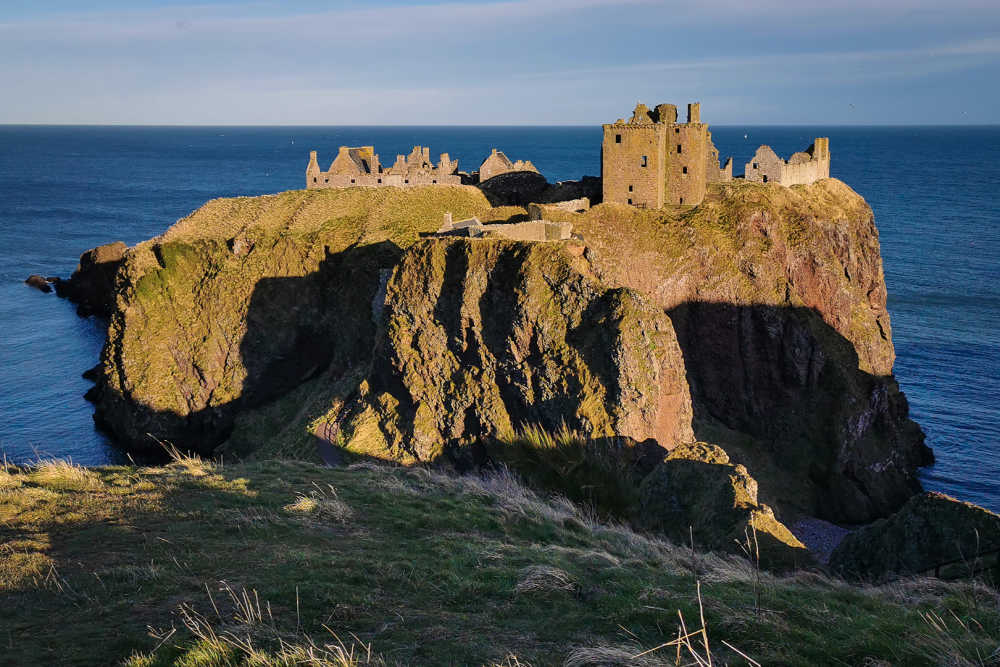
Dunnottar Castle is a breathtaking ruin on the northeastern coast of Scotland. It is also part of the Scottish Castle Trail which weaves its way from the Aberdeenshire coast to the lush green valleys of the Cairngorms National Park and connects 19 awe-inspiring castles in the region.
Like many other castles in Scotland, Dunnottar Castle has a bloody history. William Wallace once burnt a troop of English soldiers at the castle’s chapel and in the 17th century over 150 Covenanters were captured and held at the castle vaults for nine weeks. Only a few of them survived.
But not all is bad – the fortress also played host to the likes of Mary, Queen of Scots and today it is a fantastic site to learn about castle architecture through the centuries.
Dunnottar is a fascinating castle to visit in Scotland, a photographer’s dream (especially at sunrise and sunset) and a great location to watch wildlife, from seabirds to seals, dolphins and even whales. Don’t miss out!
Contribution and Photo from Kathi of Watch Me See
Reviews of Dunnottar Castle | Stonehaven, AB39 2TL, Scotland
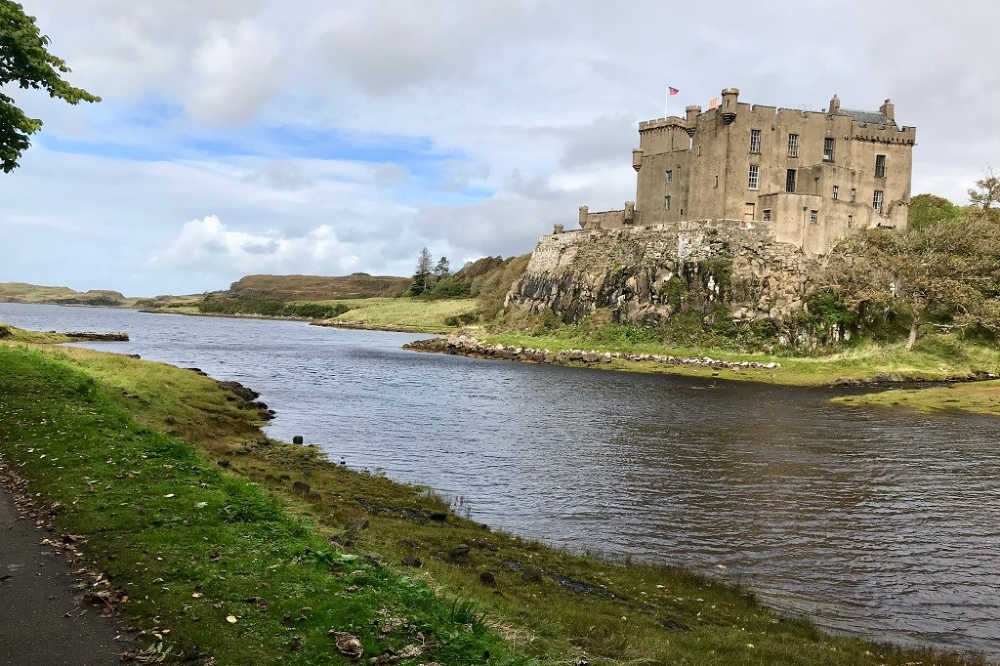
On a visit to the Isle of Skye, you will no doubt want to visit Dunvegan Castle, the ancestral home of the McLeod clan. Perched on a craggy outcrop, overlooking a loch and surrounded by 42,000 acres of prime estate, this castle is in a spectacular location.
Occupied by the McLeod clan for over 800 years and steeped in folklore this family home is now open to the public. Take a tour of the castle and hear about the famous Fairy Flag of Dunvegan, known for the traditions of fairies and magical properties it is associated with. Displayed in the castle along with other relics, legend tells that the Fairy Flag was passed to an early chieftain by a mythical being and it helped the clan win battles, cure illness and increase fertility. Who knows whether it is true or not but it is a magical tale to hear.
After your tour, which can be taken with or without a guide, make your way into the five acres of formal gardens which adjoin the castle. Waterfalls and bridges, flower and herb gardens, gazebos and waterlily ponds are all designed with the visitor in mind. You can spend some time just enjoying the beauty of nature but there is another surprise in store for you.
Take a stroll to the boathouse, which sits on the shores of the loch and hop aboard a boat for an exhilarating 25-minute journey to the Dunvegan Seal Colony where you can observe these animals interacting with one another. Boat rides are available from April to September and are perfect for all ages, just make sure to wrap up warmly before your trip!
The Isle of Skye is a fabulous destination to visit and if you would like to know more about what you can see and do while there then please refer to my post ‘An Epic Road Trip Around the Isle of Skye’.
Contribution and Photo from Angela of Where Angie Wanders
Reviews of Dunvegan Castle | MacLeod Estate, Dunvegan House, Dunvegan, Isle of Skye IV55 8WF, Scotland
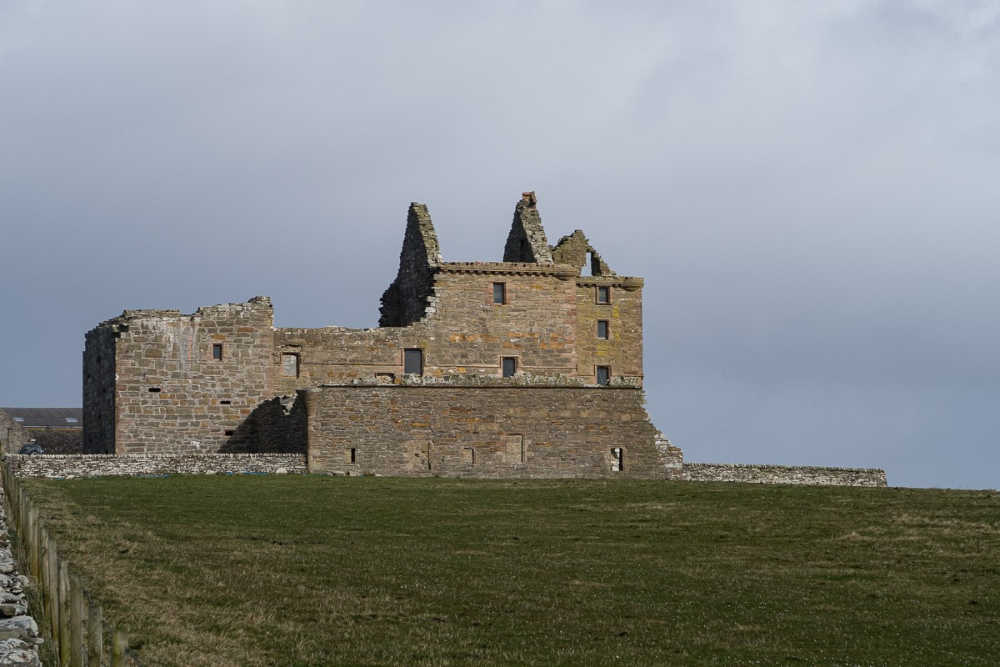
Noltland Castle is found in the far north of Westray, an island in the Orkney archipelago. Taking the road from Pierowall, the main village on the island, towards the lighthouse at Noup Head the castle is found on the left-hand side of the road with a small parking area.
This castle was built in 1560 by Gilbert Balfour the brother-in-law of the Bishop of Orkney, although he never actually finished the project. Balfour was involved in the plot to kill Mary, Queen of Scots’ husband and through ongoing seizures and returns the castle went between Balfour and the Earls of Orkney a number of times. Balfour was executed in Sweden in 1576 and yet again the castle was seized by the Earl of Orkney. It was eventually returned to the Balfours and in 1606 it was sold to the Sheriff of Orkney. In 1650 during the Wars of the Three Kingdoms, Royalist officers occupied the castle which was captured and burned by local Covenanters and left to decay.
It is maintained by Historic Scotland but there is no entry fee, just a box for donations. You are free to wander around the ruins at your own pace and imagine how it would have been during its tumultuous past. There are a few information boards but this lack of formality makes for part of the appeal of this castle. The journey to this remote castle and its actual location is also part of the magic.
Contribution and Photo from Suzanne of Meandering Wild
Reviews of Noltland Castle | Orkney, KW17 2DW, Scotland
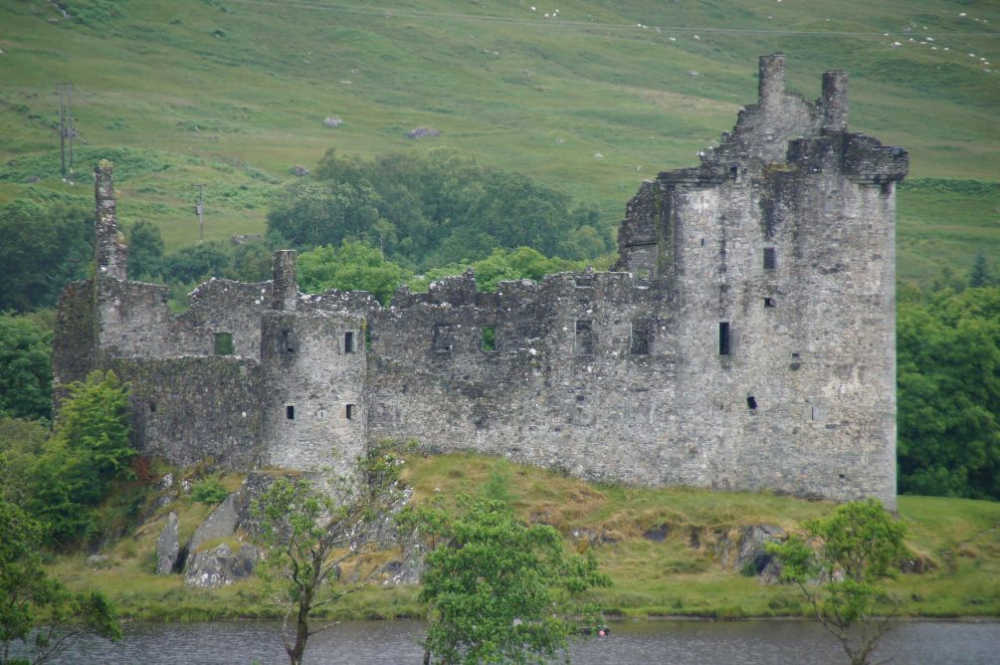
This atmospheric ruin of a 15th-century castle is located in Argyll on what was once an island in Loch Awe. However, since the water levels of the Loch are lower now than what they were 600 years ago, what was once an island is now a rocky peninsula most of the time.
Thanks to its incredibly photogenic location at the head of Loch Awe, with Ben Cruachan peak visible behind it, Kilchurn is one of the most photographed castles in the country. Built by Sir Colin Campbell, 1st Lord of Glenorchy, it served as the powerbase of the Campbell clan for 150 years but was then abandoned in the 1700s after it was badly damaged by lightning.
The interior is open only during the high season, from 1 April to 30 September, from 9:30 am to 5:30 pm. While you can always view the castle from the outside year-round, you should definitely go inside if you have the chance. There’s no entrance fee, and even though it lies completely in ruins, the view from the battlements at the top of the tower house is spectacular. Below the five-story tower house is a courtyard, a hall, and the oldest surviving barracks on the British mainland.
Contribution and Photo from Wendy of The Nomadic Vegan
Reviews of Kilchurn Castle | Lochawe, Dalmally, PA33 1AF, Scotland
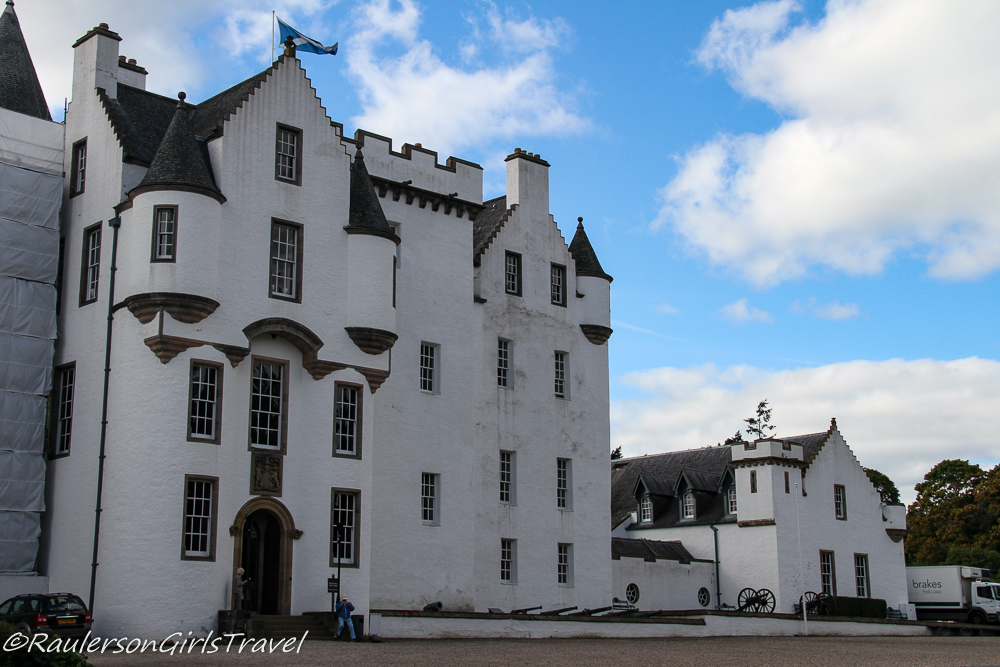
Blair Castle is the home of Clan Murray, the seat of the Duke of Atholl, and is in Perthshire situated with a commanding view of the A9 highway in the central Scottish Highlands. Since 1269, these grounds have seen several battles during the Jacobite Rising in 1689 and in 1745. Prince Charles Edward Stuart even occupied the castle twice during the 45 uprisings but abandoned it to fight the Battle of Culloden. Today the castle is held in charitable trust under Scottish control.
You can tour the castle’s many rooms to see the previous Duke’s collection of weapons and his numerous hunting trophies. And that Duke loved to hunt! The rooms are elaborately decorated with more antlers than you can count. After a tour through the castle, you can walk through the grounds to see all the deer and the stag on the property and even explore the impressive Hercules Garden. This nine-acre walled garden is beautiful with large ponds, life-sized statues and a Chinese bridge on the far end of the pond. Don’t be surprised to see ducks wandering along the path with you admiring the bounty of flowers planted all along the wall.
Some of the other fun facts for Blair Castle is that this is the home to Britain’s only private army, the Atholl Highlanders. Plus, every two years, Blair Castle holds a Jamborette, which is Scotland’s premier international Scouting event.
With the gorgeous Highland landscape, it is no wonder that Blair Castle is a must-see on your next visit to Scotland.
Contribution and Photo from Heather of RaulersonGirlsTravel
Reviews of Blair Castle | Blair Atholl, Pitlochry PH18 5TL, Scotland
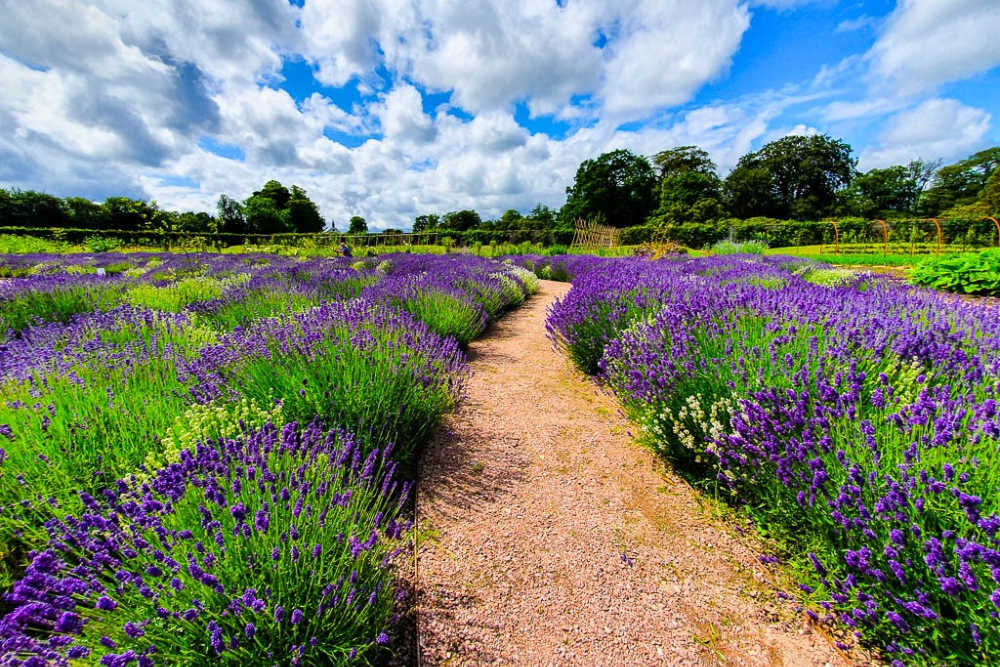
In the heart of the Speyside whisky region of northern Scotland, Gordon Castle has stood the test of time since its first adaptation in the 1470s. Evolving over the centuries, today Gordon Castle is one of the largest country houses ever built in Scotland. Gordon Castle is the historic home to the Gordons, one of Scotland’s oldest families.
The standout feature of Gordon Castle is the six-storey medieval tower referred to locally as Bog-of-Gight. In addition to being a family residence, the castle has served many roles in its long history. During the First World War, the castle served as an auxiliary hospital for wounded soldiers. Time has not been kind to Gordon Castle as after World War One it was abandoned by the family and fell into disrepair. Thankfully after the Second World War, the castle underwent a series of repair projects that continue to this day.
One of the projects undertaken to save the castle and return it to its former glory was the restoration of its Walled Garden. Surrounded on all four sides by a massive stone wall, the gardens span over eight acres and feature a diverse range of flowers, herbs, and vegetables. A hidden gem in the Speyside region, the Walled Gardens are a must for any Scotland itinerary and one of the many reasons that make Gordon Castle so special.
Contribution and Photo from Amber of Food Drink Destinations
Reviews of Gordon Castle | Gordon Castle Estate, Fochabers IV32 7PQ, Scotland
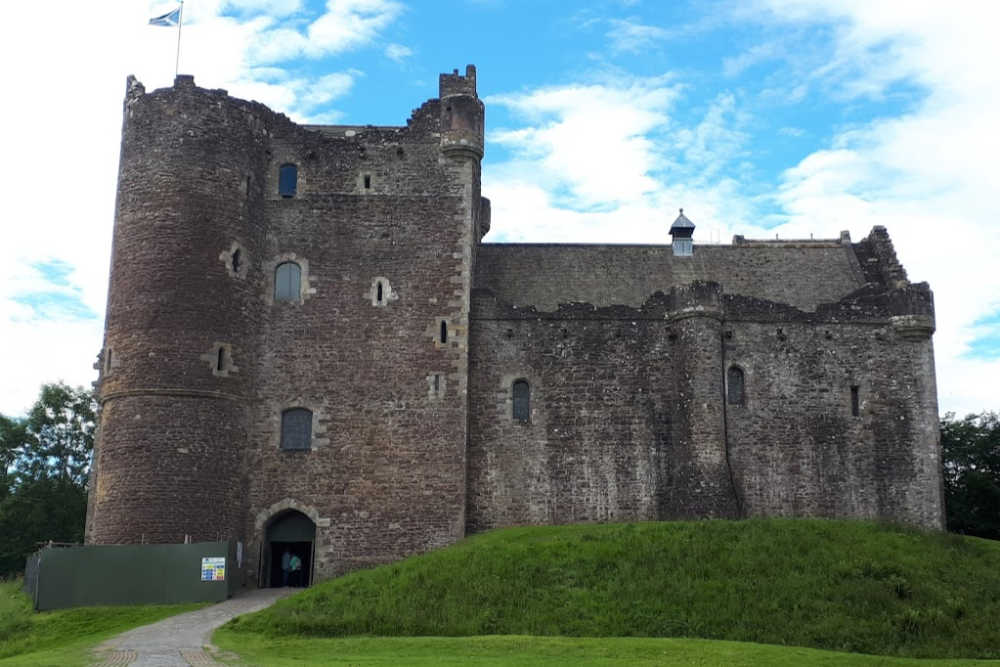
Doune Castle was originally built in the 13th century before it was damaged during the Scottish Wars of Independence and then rebuilt in the 14th century. It is located eight miles north-west of Stirling in the centre of Scotland and on the edge of the Scottish Highlands.
The castle has seen military action over the years, most recently in the late 17th century during the Jacobite risings. It has also been used as a garrison and prison, a royal retreat and a film set.
The castle is now most famous as it was used during the filming of Monty Python and the Holy Grail and most recently during the filming of Games of Thrones as Winterfell and the Scottish TV series Outlander.
It is a popular castle to visit and included with your admission you get an audio guide narrated by Monty Python’s Terry Jones. He leads you through the different rooms that have been restored and tells you the history of the rooms in a very interesting way.
The Lord’s Room has been restored to how it once looked to show you how grand the castle was but the other rooms have not been restored.
It is definitely worth a trip to Doune Castle, especially if you are hiking in Scotland as it is a beautiful castle with an interesting history.
Contribution and Photo from Clare of I Live 4 Travel
Reviews of Doune Castle | Castle Hill, Doune FK16 6EA, Scotland
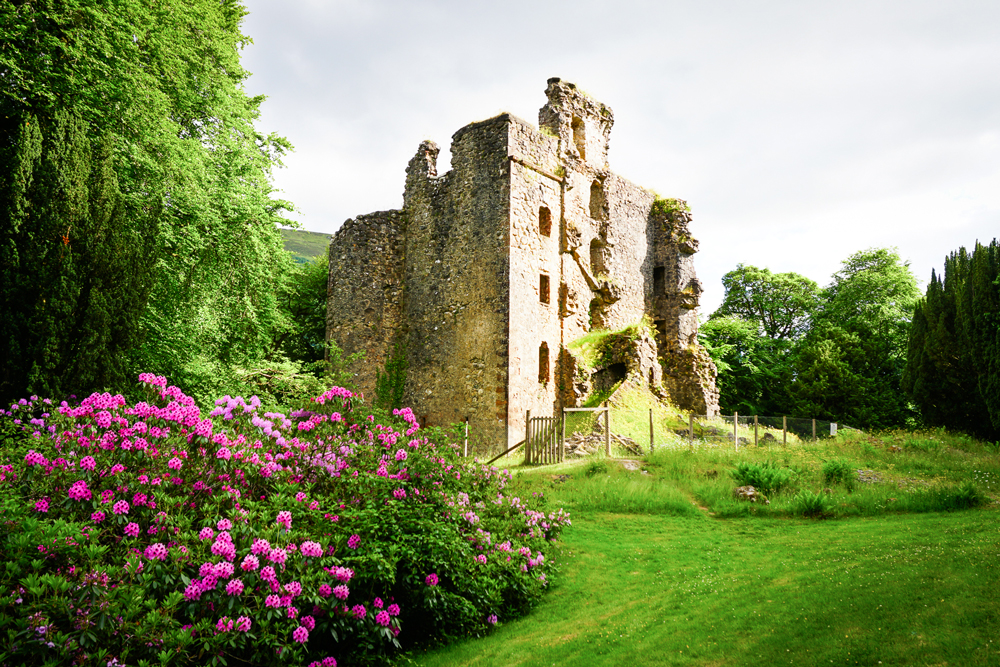
Invergarry Castle is one of my favourite hidden gems in Scotland. It’s located in the tiny village of Invergarry in the Scottish Highlands and is often overlooked because it’s tucked away from the main roads within the grounds of Invergarry Castle Hotel.
The castle ruin sits atop Creagan an Fhithich (the Raven’s Rock) overlooking Loch Oich. According to tradition, the six-storey L-plan tower house was built with stones passed from hand to hand by a chain of men, all the way from the mountain Ben Tee. Not only is Invergarry Castle one of the most picturesque castle ruins in Scotland, but it also has a fascinating history.
Invergarry Castle is the historic seat of the chiefs of Clan MacDonnell of Glengarry, who were staunch Jacobites. Bonnie Prince Charlie visited the castle on two occasions and it is thought he rested here after the defeat of his Jacobite army at the Battle of Culloden. Because of their Jacobite loyalties, Invergarry Castle was blown up shortly afterwards by the Duke of Cumberland and his English troops. The castle refused to yield but it did suffer enough damage to become unlivable, as you’ll see today.
While you cannot explore inside the castle (it’s fenced off) you can still peer inside the castle and imagine the mighty fortress it once was.
After the Highland Clearances, many of the MacDonnells of Glengarry immigrated to Nova Scotia– ‘New Scotland’ in Canada.
Contribution and Photo from Yvette of Wayfaring Kiwi
Reviews of Invergarry Castle | Invergarry, PH35 4HW, Scotland
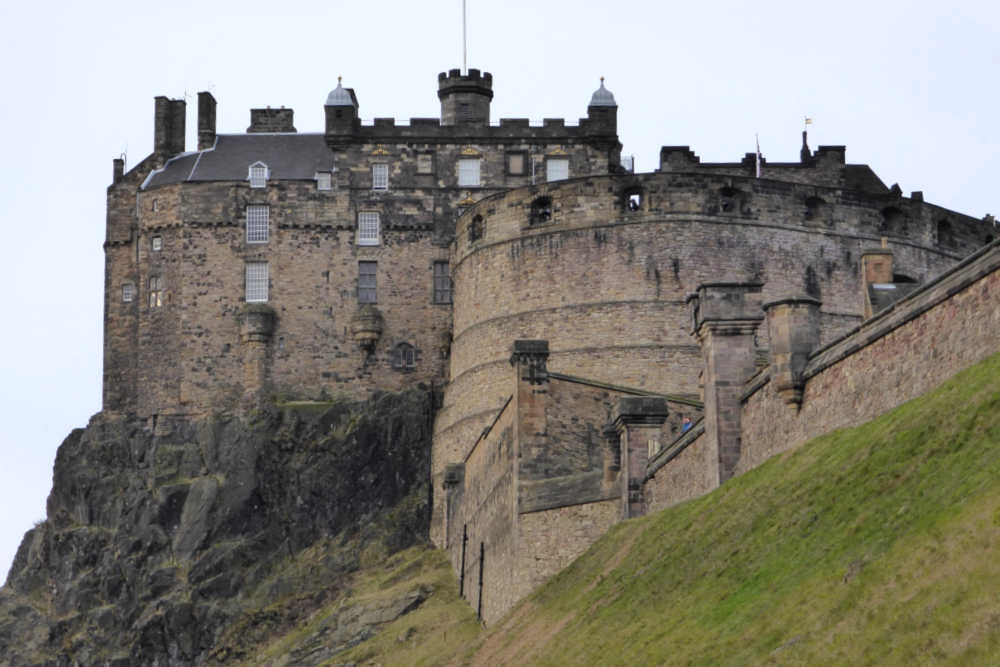
Undoubtedly the most remarkable attraction in Edinburgh, most visitors to the city will at some point visit Edinburgh Castle. It was certainly high on our list of places to visit (like the million+ other visitors per year) and with good reason; it is jam-packed with so many things we love!
The castle dates back to the 7th century, but the rocky hill it sits upon has seen action longer than that and is the very reason for Edinburgh’s existence. Today, Edinburgh Castle is a cluster of museums, militaria, chapels, cannons, vaults, prisons, the Scottish Crown Jewels, all with an amazing view of the whole city.
When visiting be sure to look for the following spots of interest: the Entrance Gateway, the Portcullis Gate, St. Margaret’s Chapel, the Scottish National War Memorial, the Great Hall, the Stone of Destiny, and the Royal Apartments. Every building has a unique story, which is told on the audio guide if you decided to purchase one. We chose not to, so instead read the information available or asked one of the knowledgeable guides if we had a question.
If you have time, they also do a lovely afternoon tea with scones, clotted cream and jam at a little café just outside the area where they shoot the cannon each day.
Review of Edinburgh Castle | Castlehill, Edinburgh, EH1 2NG, Scotland
READ MORE: Complete Guide to Visiting Edinburgh Castle
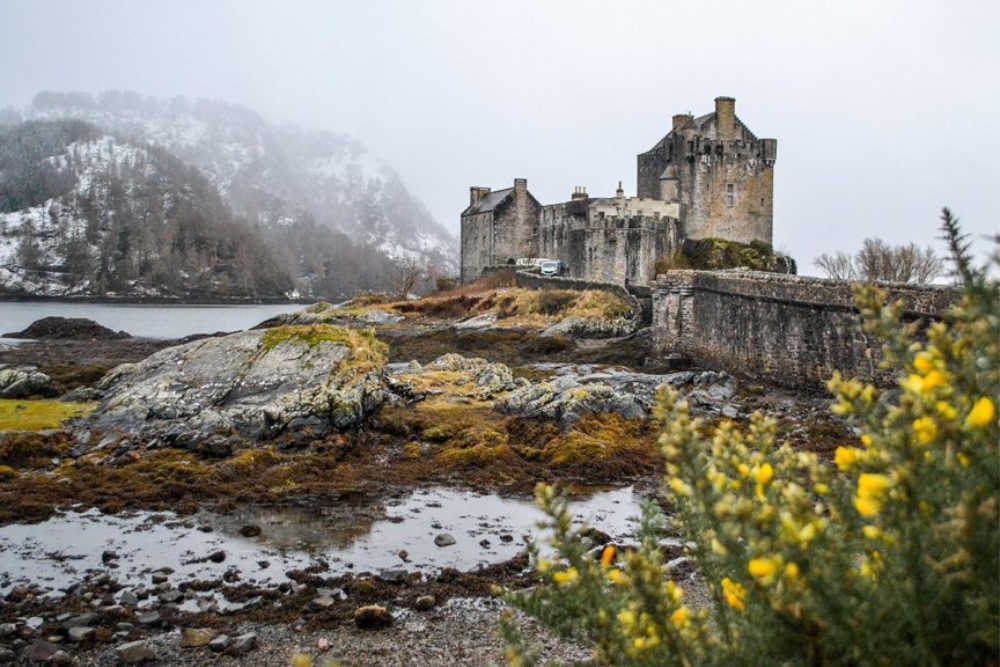
Eilean Donan Castle, named after the small island on which it is situated, is one of the more iconic castles of Scotland found along a scenic route from the western highlands towards the Skye Bridge and the crossing to the Isle of Skye. It is also one of the more off-the-beaten-path attractions, better suited to a road trip itinerary in Scotland, where it is found by the majestic lakes of Kyle of Lochalsh. And while it is rarely included as a day trip destination, it is popular for wider tours in the northern parts of Scotland.
The castle itself was founded back in the 13th century to fortify the realm of Alexander II. Since then it has been the stronghold of the Mackenzie and Macrae Clans right through to the Jacobite Rebellions in the 18th Century when the castle was demolished. So much of the current structure at Eilean Donan dates back now to 1919-1932 when the castle was restored to include an arched bridge for easier access to the island.
These days the castle is open to the public, and, surprisingly, given its location, it is the third-most-visited castle in all of Scotland. Inside there is a purpose-built tourist centre, and the castle and exhibitions are open to visitors almost year-round (it is closed in January). Otherwise, the main draw to Eilean Donan is the rather spellbinding scenes of the castle and surrounding lochs.
An easier independent route to reach the area would be by bus from Fort William taking roughly 1h 45mins.
Contribution and Photo from Allan of It’s Sometimes Sunny in Bangor
Reviews of Eilean Donan Castle | Dornie by Kyle of Lochalsh, IV40
Looking for more information to plan your visit to Scotland? You may find these articles helpful.
RESOURCES | PLAN YOUR TRIP TO SCOTLAND
- Can’t get enough castles? Check out The Complete Illustrated Guide to Castles, Palaces, and Stately House of Britain and Ireland and you’re sure to find plenty to explore!
- The Most Amazing Royal Places in Britain brings British heritage to life with hundreds of ideas for days out to discover castles, grand estates, and the secret hideaways of kings and queens.
- For all things Scotland, you can’t go wrong with Rick Steves! Check out his Scotland travel guide, full episodes of his TV show, or download his app for excellent audio tours.
Some of the links in the post above are affiliate links. This means if you click on the link and purchase the item, we will receive an affiliate commission but this does not affect the price to you. Please read our full disclosure policy here.

